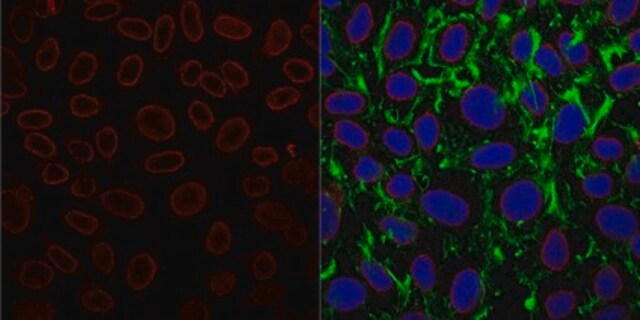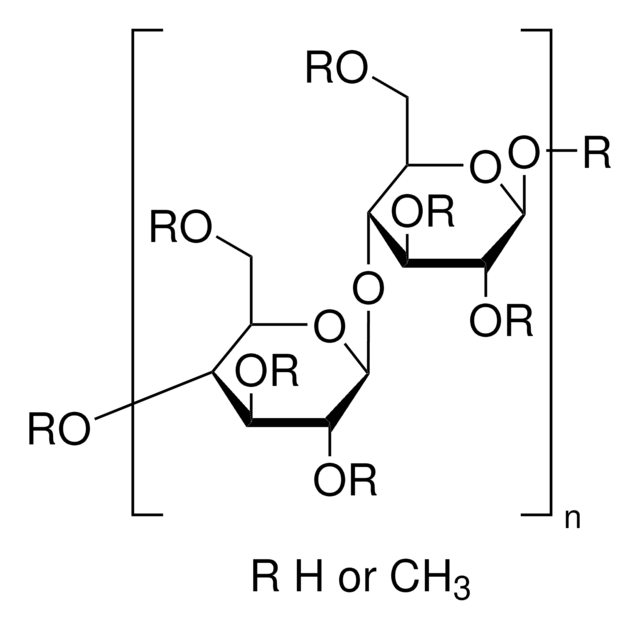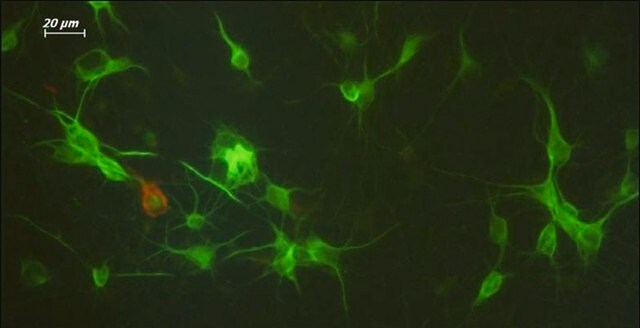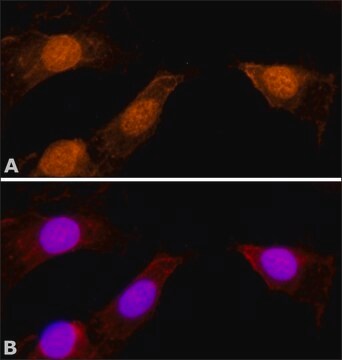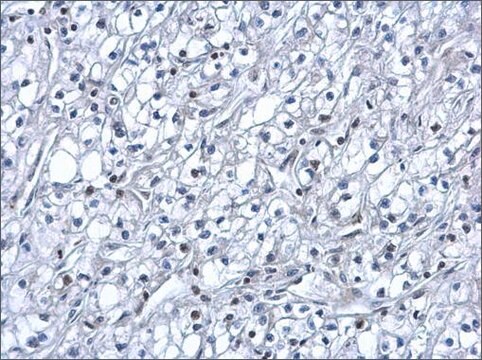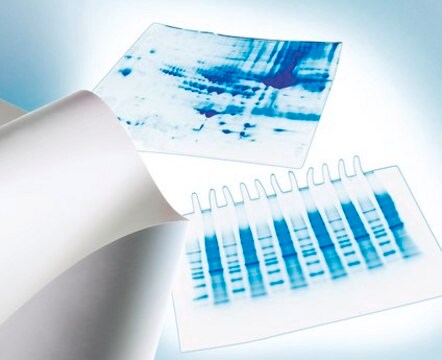N8786
Anti-Nuclear Pore Complex Proteins antibody, Mouse monoclonal
clone 414, purified from hybridoma cell culture
About This Item
ICC
IP
WB
immunocytochemistry: suitable
immunoprecipitation (IP): suitable
western blot: 2-4 μg/mL using HeLa total cell extract
Produtos recomendados
fonte biológica
mouse
Nível de qualidade
conjugado
unconjugated
forma do anticorpo
purified immunoglobulin
tipo de produto de anticorpo
primary antibodies
clone
414, monoclonal
Formulário
buffered aqueous solution
peso molecular
antigen 62-210 kDa
reatividade de espécies
mouse, rat, yeast, Xenopus, human
concentração
~3 mg/mL
técnica(s)
electron microscopy: suitable
immunocytochemistry: suitable
immunoprecipitation (IP): suitable
western blot: 2-4 μg/mL using HeLa total cell extract
Isotipo
IgG1
Condições de expedição
dry ice
modificação pós-traducional do alvo
unmodified
Informações sobre genes
human ... NPIPB15(440348)
Descrição geral
Imunogênio
Aplicação
- immunoblotting
- immunoprecipitation
- immunocytochemistry
- immunoelectron microscopy
- immunofluorescence
Ações bioquímicas/fisiológicas
forma física
Exoneração de responsabilidade
Não está encontrando o produto certo?
Experimente o nosso Ferramenta de seleção de produtos.
Código de classe de armazenamento
12 - Non Combustible Liquids
Classe de risco de água (WGK)
nwg
Ponto de fulgor (°F)
Not applicable
Ponto de fulgor (°C)
Not applicable
Escolha uma das versões mais recentes:
Já possui este produto?
Encontre a documentação dos produtos que você adquiriu recentemente na biblioteca de documentos.
Artigos
The isolation of subcellular fractions by centrifugation is a commonly used technique and is widely applicable across multiple cell and tissue types. Because organelles differ in their size, shape, and density, centrifugation can be easily employed to separate and purify organelle fractions from gently homogenized samples.
Nossa equipe de cientistas tem experiência em todas as áreas de pesquisa, incluindo Life Sciences, ciência de materiais, síntese química, cromatografia, química analítica e muitas outras.
Entre em contato com a assistência técnica